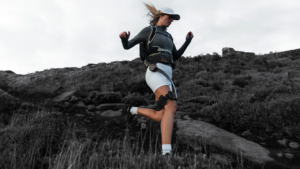From the Series
Jake Barton has always been interested in the "mash-mash of space and storytelling". The founder of New York-based media design company Local Projects previously designed interior architecture for museums, created sets and directed for the theater. He believes the best way to bring these two elements together is through the use of technology.
"Storytelling is an incredible powerful tool because it is literally how humans understand the world. It is how we first understand ourselves, our parents, our civilization. But more importantly, stories are how we organise the world," Barton says. "It is also how we share, how we connect all that happens to us. So by allowing different interfaces to become stories is a way to connect people together."
Local Projects is the creative force behind StoryCorps, which harnesses the power of storytelling on a grand scale. For this national oral histories' project, people across the US interview each other and record their individual life stories, creating a large national archive. The project invited people to interview their grandparents and relatives for 45 minutes in soundproof booths specially placed in public spaces. Participants receive a physical copy of the recording and a copy goes into the National Library of Congress of America.
"We are building an archive one conversation at a time. As you multiply this over tens of thousands of people, you get a massive snapshot of America at this particular point in time - but you get it through these very, very intimate connections," says Barton.
He also highlights the importance of media's physicality to give a sense of permanence: "One thing people in general have started to notice about digital technology is the lack of physical representation not just from an institutional standpoint - virtual libraries are much easier to maintain than physical libraries - but from a cognitive standpoint. As human beings, many of the connection we are able to make in our brains are predicated on space and the experience and order of space. The part of the brain that deals with navigating space is the hippocampus and essentially, if things don't go through the hippocampus you don't remember as well."
That is why you might remember a shelf of books or an individual page of a book very differently than you would a playlist or some type of algorithmically generated piece of content.
"While storytelling has been this ancient phenomenon, the method of storytelling actually influences the story itself. So anyone who has read and loved a book and is then radically disappointed by the film understands that the medium really changes how you understand the story."
For Barton, digital technology not only changes the way stories can be told but also how they can be authored, often through collaborative storytelling.
This involves groups of people gathering together on a platform to share their stories both with each other and with the world in general. "That, frankly, is radically different. That hasn't happened before. There are cases with oral traditions where people are able to share [their stories], but that's typically dozens or maybe hundreds of people. We're talking hundreds of thousands, even millions of people all gathering together their memories in very specific ways to create a larger narrative that is bigger than any one author," he says.
Local Projects works with interfaces that use technology within physical space. The firm is interested in how to make storytelling social. "Most technology is made for one person or for you to extract information from the interface. We build interfaces that are social - they are meant to have a secondary experience. This is a very important distinction that comes out of the physical space itself."
Barton points out that the firm's work emerges first from an understanding of physical space as an interface itself and then layering digital interfaces onto that. He cites projects such as the recently completed 9/11 Memorial and the ongoing StoryCorps project, as well as interfaces for the Cleveland Museum of Art, which allows people to make different faces or body gestures and matches them with artworks in the collection.
"Creating meaning out of the interactions themselves, that is the holy grail... that is where you transcend just the newness or the innovation part of it and actually create a human connection, which at the end of the day is what all creatives or after - or even brands, that's what they are interested in doing, in making a deeper relationship with their customers. So figuring out how not just to grab people's attention with novelty but more importantly, to deliver and to actualise that connection is really important."










